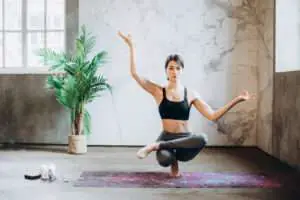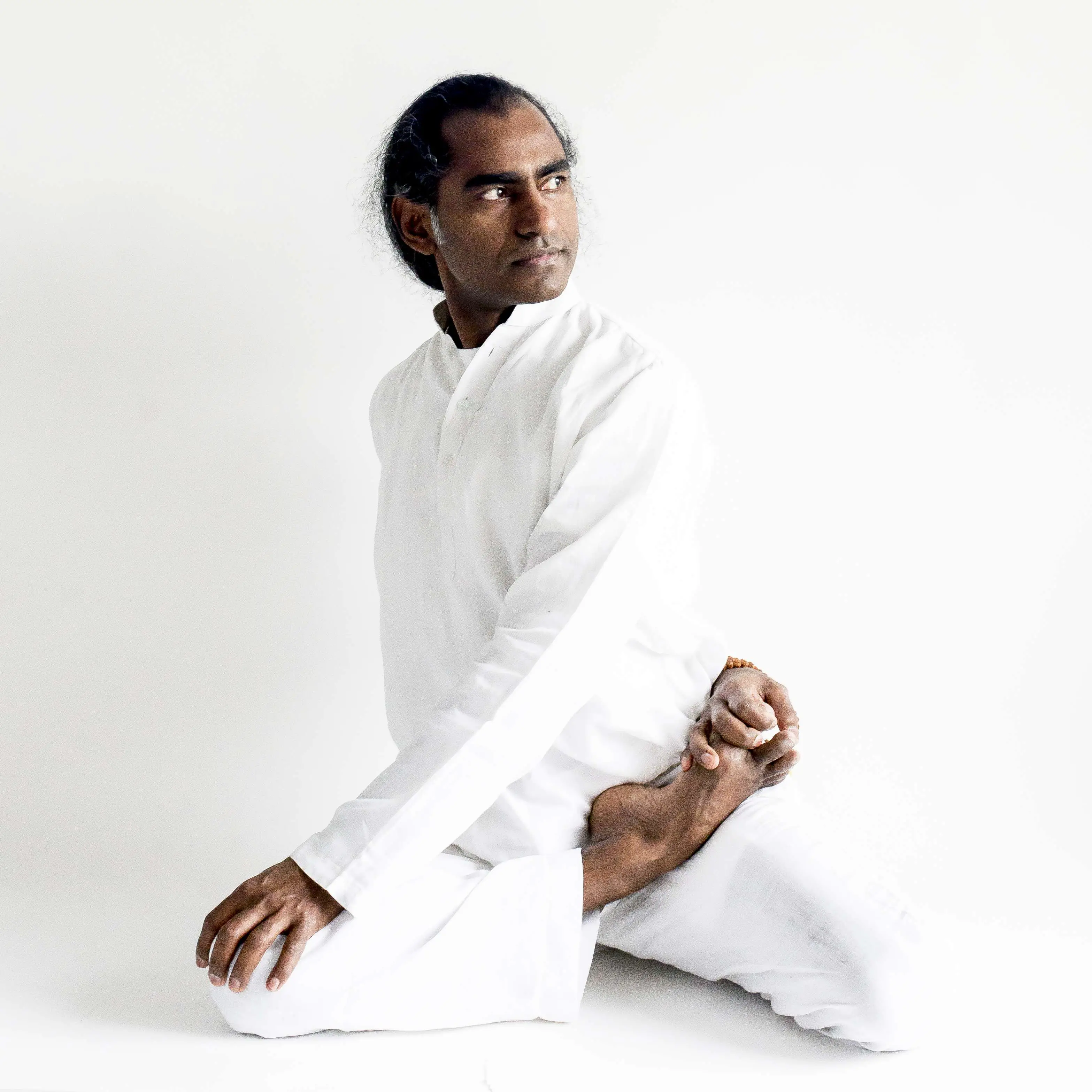Yoga Through the Ages: Unpacking the Power of the Asanas
Introduction
Yoga is an ancient practice that has been in existence for thousands of years. It is a holistic approach to physical and mental health, and its origins date back to the ancient Vedic period of India. The term “yoga” comes from the Sanskrit word “yuj” which means “to join,” and the practice of yoga is based on the idea of union between the body, mind, and spirit. The history of yoga and asanas is complex and varied. The practice has evolved over time and has been adapted and adopted by other cultures and religions. The earliest known mentions of yoga can be found in the ancient Vedic scriptures, which date back to 2500 BCE. In these scriptures, yoga is described as a way of connecting to the divine and achieving spiritual enlightenment. During the Vedic period, yoga was mainly practiced by priests and scholars as a way of achieving physical and spiritual mastery. Over the centuries, yoga has spread to different parts of the world, and various yoga schools and styles have developed. In the 19th century, yoga was popularized in the West by Indian teachers such as Swami Vivekananda, who traveled to Europe and the United States to spread the teachings of yoga. In recent decades, yoga has gained mainstream popularity.
Ancient Origins of Yoga
Yoga has been practiced for centuries in various parts of the world, however, the earliest known references to yoga come from pre-Vedic sources. Evidence of yoga practices can be found in the Rig Veda, which is the oldest known text of Hinduism, dating back to around 1500 BCE. The Rig Veda mentions the practice of meditation and chanting of mantras, which are considered to be essential to the practice of yoga. In addition, archaeological evidence suggests that yoga was practiced in India as early as 2500 BCE. Although yoga is believed to have originated before the Vedic period, it was during the Vedic period (1500-500 BCE) that the practice of yoga began to be codified and organized into a formal system. This was the period when the four Vedas (RigVeda, YajurVeda, SamaVeda and AtharvaVeda) were composed. These texts contain the earliest known references to yoga and its practices, such as meditation, chanting and postures. The most famous of these is the Upanishads, which is widely considered to be the philosophical foundation for yoga. The Upanishads contain the first references to pranayama (breath control) and asanas (yoga postures), which are essential elements of the practice of yoga. In addition, the Bhagavad Gita, which is an important part of the Vedic literature, contains some of the earliest references to the concept of karma and reincarnation, which are essential components of the philosophy of yoga.
Yamas and Niyamas
Yamas and Niyamas are the two sets of rules that form the foundation of yoga. They are the ethical and moral codes to which practitioners of yoga must adhere. The Five Yamas, or rules of ones behavior, are: Ahimsa (non-violence), Sa
Asanas
Next, we will explore the practice of asanas and their associated limbs. Asanas are physical postures that are used in yoga practice, and are believed to be the foundation of all physical yoga. The Eight Limbs of Yoga are an integral part of the practice of asanas. These limbs are the guidelines for yogic practice, and can be found in the ancient text of the Yoga Sutras of Patanjali. The limbs are Yama, Niyama, Asana, Pranayama, Pratyahara, Dharana, Dhyana, and Samadhi. Yama and Niyama represent the ethical and moral guidelines for yogic practice, Asana is the physical practice of postures, Pranayama is the control of breath, Pratyahara is the control of senses, Dharana is concentration, Dhyana is meditation, and Samadhi is the highest state of consciousness. The origin of asanas is still a matter of debate in the modern world, with a variety of different theories being proposed. One theory suggests that asanas were developed as part of the meditative practice of Hatha yoga, which has its roots in the Vedic tradition of India. The teachings of Patanjali are said to have been the first written mention of asanas, and it is believed that the practice of asanas was already in existence at that time. Asanas can be divided into a variety of different categories, based on the type of posture being practiced. Standing poses are used to build strength, balance, and endurance. Seated poses are used to build flexibility, and promote relaxation. Backbends are used to open the chest and lungs, and provide a sense of openness and freedom. Twists are used to stretch and massage the internal organs, and stimulate digestion. Inversions are used to calm the nervous system and promote a sense of inner peace. And finally, restorative poses are used to relax the body and mind, and promote healing and restoration. Asanas are an integral part of the practice of yoga, and have been practiced for centuries. By exploring the history and practice of asanas, we can gain a deeper understanding of the practice of yoga, and find our own path to health and wellbeing.

Elina Fairytale at Pexels
Modern Yoga
In the modern era, traditional practices of yoga have evolved and been popularized in many parts of the world. Asanas, or postures, have been adapted and changed to accommodate the needs of modern practitioners. Variations of the traditional practice of yoga have been practiced for centuries, but modern adaptations have broadened its reach and impacted its practice. With the advent of technology, yoga can now be practiced virtually, making it easier for anyone to connect with a community of yogis and learn the practice. Many styles of yoga have been developed in the modern era, from vinyasa to hot yoga, making yoga accessible to all. In addition, modern adaptations of traditional postures have made them more accessible for people of all ages and abilities. For instance, modifications such as props, blocks, and straps can be used to make a pose more comfortable or accessible. This has opened up the practice of yoga to a wider range of practitioners, allowing those who are new to yoga or those with physical limitations to enjoy the practice. Not only is it widely practiced in gyms and studios around the world, but it has also become a popular form of self-care for many people. It has been featured in magazines, television shows, and movies, and has become a major part of pop culture. Furthermore, the internet has played a large role in the popularization of yoga, with yogis from all over the world coming together online to share their knowledge and experiences. This has created a vast online community of yogis, making it easy to find resources and support to practice yoga. Overall, modern adaptations of traditional practices and the popularization of yoga have made it more accessible to people of all ages and abilities, while also creating a vibrant global yoga community.
Conclusion
The practice of yoga dates back to the classical period of India and has been practiced for thousands of years. The practice has evolved over time, with different schools of thought, techniques, and postures being developed. The practice of asanas, or poses, is an important part of the practice of yoga and can be used to improve physical and mental health. Over time, different schools of yoga have emerged, each offering their own techniques, philosophies, and postures. The benefits of practicing yoga are numerous. Regular practice can help to improve physical and mental wellbeing. It can help to improve posture and flexibility, reduce stress, and improve overall physical health. Additionally, yoga can help to improve mental clarity and focus, as well as provide a sense of inner peace. Practicing yoga can be an enjoyable and beneficial addition to any lifestyle.
You may also like my posts “Get Your Om on! The Health and Happiness Benefits of a Regular Yoga Practice“ and “Mindfulness Meditation: Unlocking the Power.”
FAQ
Q: What are asanas in yoga?
A: Asanas are the physical postures practiced in yoga. They help improve strength, flexibility, balance, and overall well-being. Asanas are a key component of traditional yoga practice, complementing breath control and meditation.
Q: How has the practice of asanas evolved over time?
A: Asanas have evolved significantly since their ancient roots in India, where they were primarily used for meditation and spiritual growth. Over time, various styles and approaches have emerged, making asanas more diverse and accessible to a wide range of practitioners.
Q: Can beginners practice asanas?
A: Absolutely! Yoga is suitable for all ages and fitness levels. Beginners should start with gentle, foundational poses and gradually progress to more advanced asanas as their strength, flexibility, and confidence increase. Attending a beginner-friendly class can be helpful for learning proper alignment and technique.
Q: What are the benefits of practicing asanas regularly?
A: Regular asana practice offers numerous physical and mental benefits, including improved muscle strength, increased flexibility, better posture, stress reduction, enhanced mental clarity, and a deeper mind-body connection. Consistent practice helps develop a strong foundation for overall health and well-being.
Q: How can I incorporate asanas into my daily routine?
A: Start by setting aside a specific time each day for your practice, even if it’s just a few minutes. Create a comfortable, quiet space where you can focus on your asanas without distractions. Experiment with different styles and poses to find what resonates with you and your body. As you grow more comfortable with your practice, consider attending classes or workshops to further expand your knowledge and skills.









